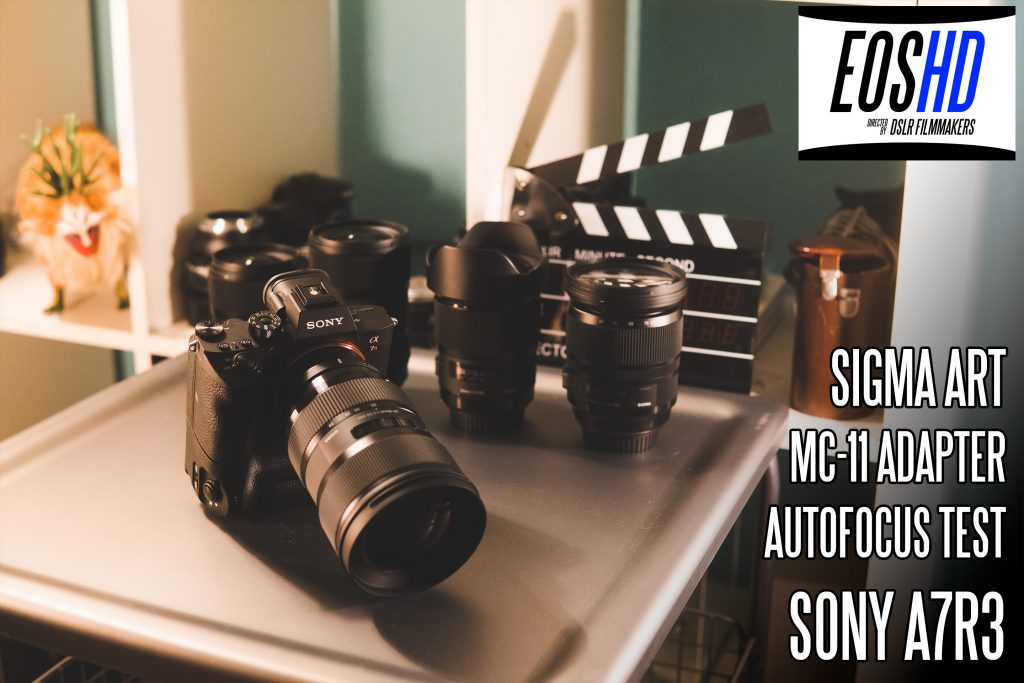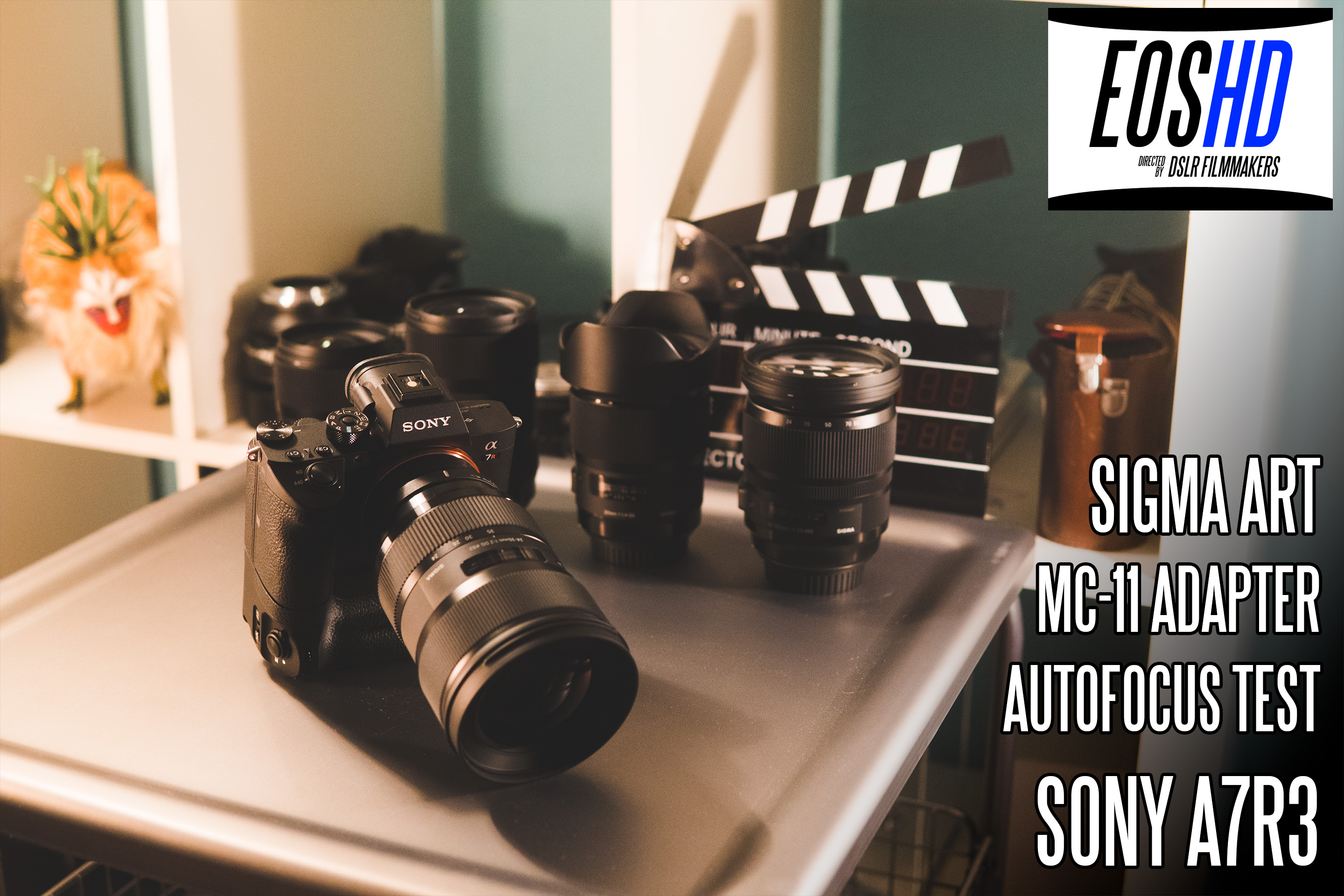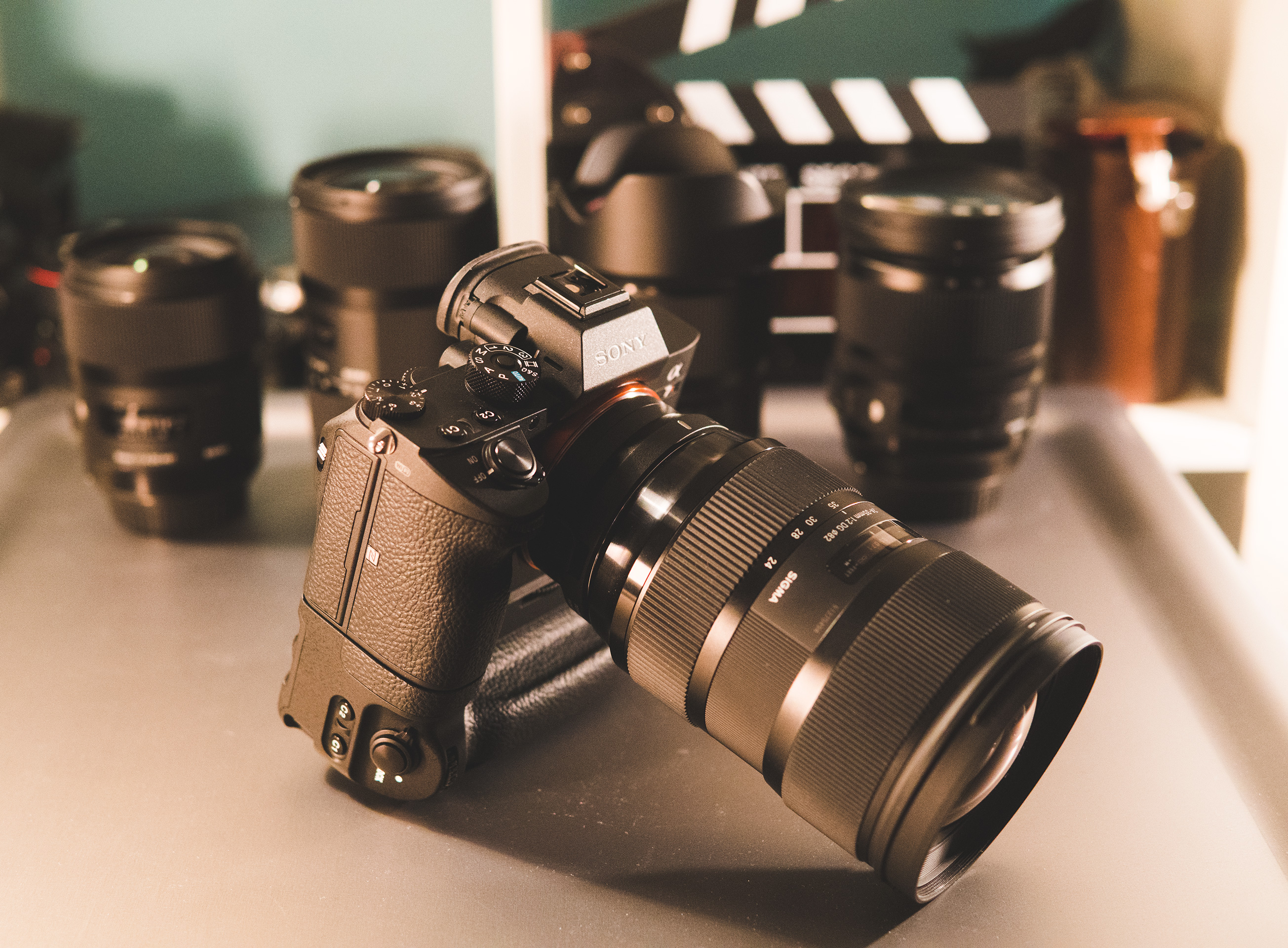
It’s time to turn to Sigma if you are a Sony user.
With Sigma’s own Canon mount MC-11 adapter, PDAF in video mode is blazingly responsive.
But ONLY with Sigma’s own lenses.
Even for cat videos, being able to focus is a useful attribute of a camera.
When you’re following your adorable centrifugal bumblepuppy around the floor with the Panasonic GH5, it’s hard not to notice the autofocus isn’t quite where it should be.
Dual Pixel AF has been a joy to use on Canon DSLRs for video, but for some reason unknown to both me AND the bumblepuppy, they haven’t backed it up with anywhere near decent video features and image quality has only just caught up with the GH1 from 2009. When it’s not 4K it’s 8 years old 1080p and when it’s 4K it’s MJPEG format with huge file sizes that are a real chore on the 5D Mark IV and the 1D X Mark II. Well done Canon.
So a brief look at video AF on the Sony A7R III with Sigma lenses reveals a surprise… it works.
Well.
With the Sigma MC-11 adapter, you get continuous autofocus and phase-detect AF in video mode even in low light. It works almost as well as a native Sony E-mount lens.
In the video above, I tested several Sigma lenses on the Sigma MC-11 adapter. For comparison I included some Sony E-mount lenses as well. With the MC-11 adapter, the Sigma Canon EF mount lenses (and their own SA mount lenses) use continuous PDAF (phase detect AF) in centre-point mode. You can also use the other modes such as centre-lock-on and wide AF point mode.
In the test:
- Sigma 18-35mm F1.8 ART (Super 35)
- Sigma 20mm F1.4 ART (Full frame)
- Sigma 24-35mm F2 ART (Full frame)
- Sigma 24-105mm F4 (Full frame)
And the following native E-mount lenses for comparison –
- Sigma 30mm F1.4 (Super 35)
- Sony / Zeiss Batis 25mm F2.0 (Full frame)
- Sony / Zeiss Batis 85mm F1.8 (Full frame)
- Sony / Zeiss 55mm F1.8 (Full frame)
I also have the Sigma 35mm F1.4 ART, 50mm F1.4 ART and 85mm F1.4 ART but these were in a different country at the time of this test.
The results are in
Amongst the Sigma lenses, the 18-35mm F1.8 seems to have the quietest autofocus motor. The native e-mount lenses like the Zeiss Batis 25mm F2 and Sigma 30mm F1.4 are silent. Some of the higher-end Sony GM lenses though are not. The sound of the Sony 85mm F1.4 GM focusing will get picked up by the internal mic in quiet conditions.
The full frame Sigma lenses DO make a noticeable clicking noise, like the Sony GM lenses but louder. So it’s recommended you take this into account before using autofocus in video mode. Dual Pixel AF Canon users will be used to the lenses clicking like Geiger counters, so it’s not a disadvantage unique to Sony or Sigma.
For autofocus in video mode you absolutely need the Sigma MC-11 EF adapter, which is around $300 (and well worth it). On the Metabones Smart EF adapter, in video mode you get absolutely no continuous or single autofocus at all WITH OR WITHOUT Sigma lenses. Canon lenses, forget it.
Although the MC-11 is superb with Sigma’s own lenses in stills mode, it is hit and miss with Canon lenses. Although it does work with many Canon choices, some seem to be more flakey with. The Metabones adapter seems to work slightly more consistently with Canon lenses in stills mode.
By the way, the recent Sigma 24-35mm F2 ART is superb. An absolutely amazing piece of glass. (Oh and the 24-105mm F4 is very underrated. Very sharp indeed for the zoom range and price). As well as being the world’s fastest DSLR zoom lens, the 24-35 is prime lens quality. Unbelievably high resolution in 4K wide open at F2.0. The great thing about this lens on the Sony A7R III is that thanks to Super 35mm mode you get a 50mm prime as well. 24mm in full frame, 35mm in full frame and 50mm in Super 35mm at 35mm. Throw in Dual Pixel AF quality autofocus and you have yourself three high-end 4K video usable prime lenses for $250 each, and no swapping lenses during a shoot.
I noticed that with the Sigma 18-35mm F1.8 Super 35 / APSC lens, it has very responsive autofocus but it did tend to go slightly past the object and roll it back into focus – which is noticeable in the test especially at 35mm. There is a bit of this on all the Sigma lenses which suggests the phase-detect AF isn’t as accurate as contrast-detect AF, and the camera uses CDAF to do a more refined re-targeting at the end of a rack. This happens very quickly though and it doesn’t hunt back-and-forth like the Panasonic GH5.
I had the camera set to Fast and Responsive in the menus for movie mode autofocus. You can do smoother and slower focus racks by changing this setting. It’s worth experimenting to see which works for the shot. For documentary I like it at the more responsive end as a quicker shot getter.
Where does this leave Canon lenses?
Not in a good place, unless Metabones, Sony and Canon work together to solve the complete lack of video autofocus.
My most used primes are the Canon 24mm F1.4, 35mm F2.0 IS, 50mm F1.2 and 85mm F1.2L. I now have an equivalent at every focal length from Sigma. What’s more, I no longer need IS on the lens as it is built into the camera with 5 axis IBIS.
I now use the Sigma 20mm F1.4 ART, 24-35mm F2.0 ART, 35mm F1.4 ART (although this gets less use now I have the 24-35), 50mm F1.4 ART, 85mm F1.4 ART and there is now a 135mm F1.8 ART which I’ve not yet bought but looks like a superb replacement for the wonderful Canon 135mm F2.0… albeit in a larger and heavier package.
In Super 35mm mode the 18-35mm F1.8 is an obvious choice and Sigma’s own autofocus native E-mount lenses like the affordable 30mm F1.4 focus even better (and silently). This bodes well for Sigma’s rumoured FE mount range of full frame E-mount lenses. I think autofocus is quieter on the APS-C Sigma lenses because the larger full frame lenses have bigger, heavier elements to shift.
It will be interesting to further tests in future, especially Sigma lenses on the A7R III versus Canon lenses on the 1D X Mark II, which currently has the most advanced and reliable Dual Pixel AF implementation of all Canon cameras (even better than the Cinema EOS C200 and C300 Mark II).
Now, finally Sony (thanks to Sigma) has an answer to Dual Pixel AF for filmmakers, and indeed the broader photography community.






